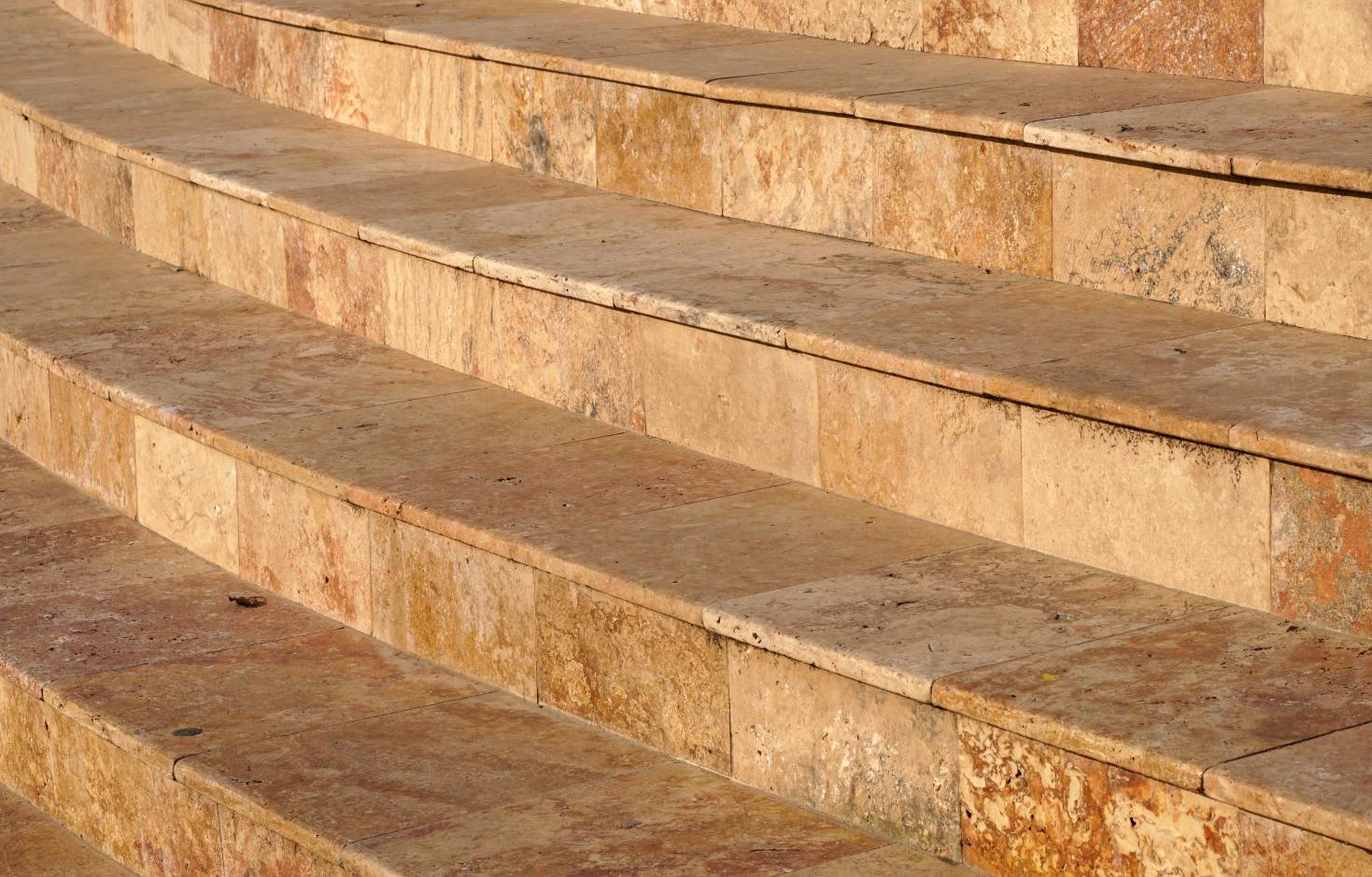Should You Choose Travertine for Your Next Project?
If you love the durability and classic good looks of stone, take a look at versatile, low-maintenance travertine.
Q. What Is Travertine?
A. Travertine is a sedimentary stone that forms in freshwater hot springs and damp caves. Minerals dissolved in groundwater travel through streams and rivers to deposit themselves on the stones. These minerals give travertine its distinctive look.
Over time, erosion from hot water and steam creates holes in the surface of the stone. When travertine is processed for use, those holes get filled to keep the stone from being overly porous.
Q. Where Does Travertine Come From?
A. Most travertine comes from hot springs and limestone caves. You can also purchase cultured travertine, which maintains all the properties and good looks of travertine at a lower cost.
In Europe, the city of Tivoli, Italy, is famous for its travertine. In the U.S., the best-known deposits of travertine are at Yellowstone National Park and Hot Springs State Park in Wyoming. Arizona, Texas, and Oklahoma have huge travertine deposits.
Q. Where Does the Name Come From?
A. The name travertine comes from the Italian word travertina, which is a reference to the Tevere or Tiber River that runs through Rome. The town of Tivoli, located on the river just outside of Rome, has huge, well-known travertine deposits.
Travertine from the Guidonia quarry in Tivoli was used to construct parts of St. Peter’s Basilica in Rome in the sixteenth century. This quarry is still in operation.
Q. Is Travertine the Same as Marble?
A. Although they look similar, the two stones are different. Here are some key differences to help you compare.
Variety. Travertine comes in a much wider variety of colors, shades, and textures than marble do. Most marble is cream to white with slight undertones of green, pink or tan. Travertine can come in gray, white, red, cream, amber, golden or silver shades. Travertine gives you more flexibility in your designs. Finished marble has a smooth, glossy finish while travertine tends to have a slightly rougher finish.
Durability. Marble is harder and more durable. It can be used in almost any setting, including heavy-duty industrial and commercial settings. Travertine is tough, but it’s not suitable for commercial use.
Cost. Marble is very difficult to excavate and process. This makes it expensive. Travertine is easier to process and to find. You can get a similar look and feel to marble at a lower price.
Q. Where Should You Use Travertine?
A. You can use travertine anywhere that you want an attractive, low-maintenance and durable stone:
- Bathroom walls and floors.
- Kitchen floors, countertops, and backsplashes.
- Outdoor terraces.
- Steps and walkways.
- Ceilings and walls.
Because it tends to have a slightly rough surface, travertine is excellent for use around pools and other wet areas, where you want to avoid smooth surfaces that can get slippery. If you’re installing travertine on a bathroom or kitchen floor, you can sand the tile surfaces to remove some of the roughness.
Q. Is Travertine Low-Maintenance?
A. It is low-maintenance and durable, but that doesn’t mean you can abuse it. Like other stones, travertine is sensitive to abrasive cleaners and harsh chemicals like bleach. If you install it, ask your masonry expert how to clean and maintain it.
Q. Can You Install Travertine Yourself?
A. No, you can’t. Like any stone, travertine is heavy and difficult to install without the right knowledge, equipment, and experience. If you would like to install travertine in your home, you must hire a professional mason.
Are You Interested in Travertine?
If you’re interested in adding beautiful, durable travertine to your home design, contact Capital Masonry today. We specialize in expert installation of all brick, stone, and concrete.
